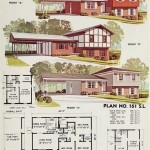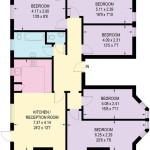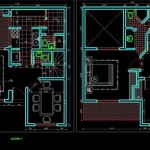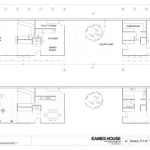Small Castle House Plans With Photos: Free Resources for Your Dream Home
The allure of a castle, with its romanticism, architectural grandeur, and historical significance, is undeniable. However, the impracticality of owning or building a full-scale castle is often a significant deterrent. The concept of a "small castle house" offers a compelling compromise, allowing homeowners to incorporate castle-inspired elements into a more manageable and affordable dwelling. Finding suitable house plans, particularly those available for free, can be a valuable starting point for realizing this architectural vision.
This article explores the landscape of small castle house plans, where to locate free resources, and essential considerations for adapting these plans to fit individual needs and local building codes. It also delves into interpreting these plans and visualizing the end product with the aid of photos and rendering software. The availability of free plans should not be mistaken for a lack of complexity; careful planning and professional consultation remain paramount to a successful project.
Locating Free Small Castle House Plans
The term "free" in the context of house plans typically refers to preliminary designs that are offered as marketing tools or for educational purposes. These plans may lack the full detail required for construction and often serve as inspiration or a starting point. Several online resources offer free small castle house plans, each with varying degrees of completeness and accuracy. Reputable architecture and design websites often feature a section dedicated to downloadable plans, including those with castle-inspired elements like turrets, arched windows, and stone facades. These sites may require registration or subscription to access the plans.
Another avenue for finding free plans is through architectural design software. Many software packages offer pre-designed templates, some of which may resemble small castles or incorporate castle-like features. While these templates might not be fully detailed construction documents, they can provide a visual representation and a basic layout to work with. Additionally, online forums and communities dedicated to architecture and home design often share user-created plans and designs. These plans are typically offered freely as a contribution to the community and may be a valuable resource, but the accuracy and structural integrity of these plans should be carefully verified by a qualified professional.
It is crucial to understand the limitations of free plans. They are often incomplete, lacking crucial details such as structural engineering calculations, plumbing and electrical layouts, and specific material specifications. Furthermore, they may not comply with local building codes and zoning regulations. Therefore, any free plan should be considered a preliminary design that requires significant modification and professional review before being used for construction. The savings gained by obtaining free plans must be weighed against the potential costs of correcting errors or non-compliance issues during the building process.
Interpreting and Adapting Free House Plans
Once a potential free small castle house plan has been located, the next step involves understanding its components and adapting it to specific needs. This process requires a basic understanding of architectural drawings and construction principles. Plans typically consist of several sheets, including site plans, floor plans, elevations, sections, and details. The site plan shows the location of the house on the property, including setbacks, easements, and landscaping. Floor plans illustrate the layout of each level, including room dimensions, wall thicknesses, and the location of doors and windows. Elevations depict the exterior appearance of the house from different perspectives, showcasing the roofline, window placement, and architectural details. Sections provide a cut-through view of the house, revealing the construction methods and materials used. Details are enlarged drawings of specific elements, such as window and door frames, staircases, and decorative features.
Adapting a free plan often involves modifying the layout to accommodate specific needs and preferences. This may include changing room sizes, adding or removing walls, and altering the location of doors and windows. However, any modifications should be made with careful consideration of the structural implications. Walls that appear non-load-bearing on the plan may still play a crucial role in supporting the roof or upper floors. Similarly, changing the size or location of windows can affect the structural integrity of the wall and the overall energy efficiency of the house. Before making any significant alterations, it is essential to consult with a structural engineer to ensure that the changes will not compromise the safety and stability of the building.
Furthermore, adapting a free plan may require updating the materials and finishes specified on the plan. The original plan may specify materials that are no longer available or that are not suitable for the local climate. It is important to select materials that are durable, weather-resistant, and aesthetically pleasing. For a small castle house, common materials include stone, brick, stucco, and wood. The choice of materials will depend on the desired style and the available budget. The selection process should also take into account the long-term maintenance requirements of the materials. Some materials, such as natural stone, may require minimal maintenance, while others, such as wood, may need to be regularly sealed or painted to prevent rot and decay.
Visualizing the Final Product: Photos and Rendering Software
Before committing to a specific plan, it is helpful to visualize the final product. Photos of similar houses can provide inspiration and help to understand how the plan will translate into a real-world structure. Online image search engines and architectural websites are excellent resources for finding photos of small castle houses. Looking at photos of different architectural styles, material combinations, and landscaping techniques can help to refine the design and create a personalized vision for the home.
In addition to photos, rendering software can be used to create a three-dimensional model of the house based on the plan. This allows one to visualize the house from different angles, experiment with different colors and materials, and even simulate the effects of sunlight and shadow. There are many rendering software packages available, ranging from free and open-source options to professional-grade programs. Some software packages require specialized training to use effectively, while others are more user-friendly and intuitive. By creating a virtual model of the house, potential problems can be identified and corrected before construction begins, saving time and money.
Furthermore, augmented reality (AR) technology is increasingly being used to visualize house plans. AR apps allow one to overlay a virtual model of the house onto a real-world environment using a smartphone or tablet. This provides a more realistic sense of the scale and proportions of the house and allows people to see how it will look on the actual building site. AR technology can be particularly helpful for visualizing the exterior of the house and assessing how it will fit in with the surrounding landscape. While AR technology is still relatively new, it is rapidly evolving and becoming more accessible, making it a valuable tool for visualizing house plans.
Ultimately, obtaining “free” small castle house plans can be a valuable starting point in the design process. However, the plans should be regarded as conceptual designs rather than complete construction documents. Adequate due diligence regarding compliance with local codes is essential to ensure structural integrity and avoid costly modifications during production. Utilizing photos, renderings, and potentially augmented reality technology will permit a better understanding of the spatial context. Moreover, consultation with contractors, architects, and structural engineers will assist in assessing the long-term viability of the selected design.
European Flair Castle House Plans Houseplans Blog Com

Dysart Castle House Plan Mansion

Cau House Plans Mini Castle And Mansion

Dysart Castle House Plan Mansion

Castle House Plan 6 Bedrms Baths 9465 Sq Ft 116 1108

Best European Manor House Plans And Small Castle

Medieval Castle Floor Plans Plan House

Cau Novella Luxury House Plan Small Castle

Castle House Plan 6 Bedrms Baths 9465 Sq Ft 116 1108

Dysart Castle House Plan Mansion








